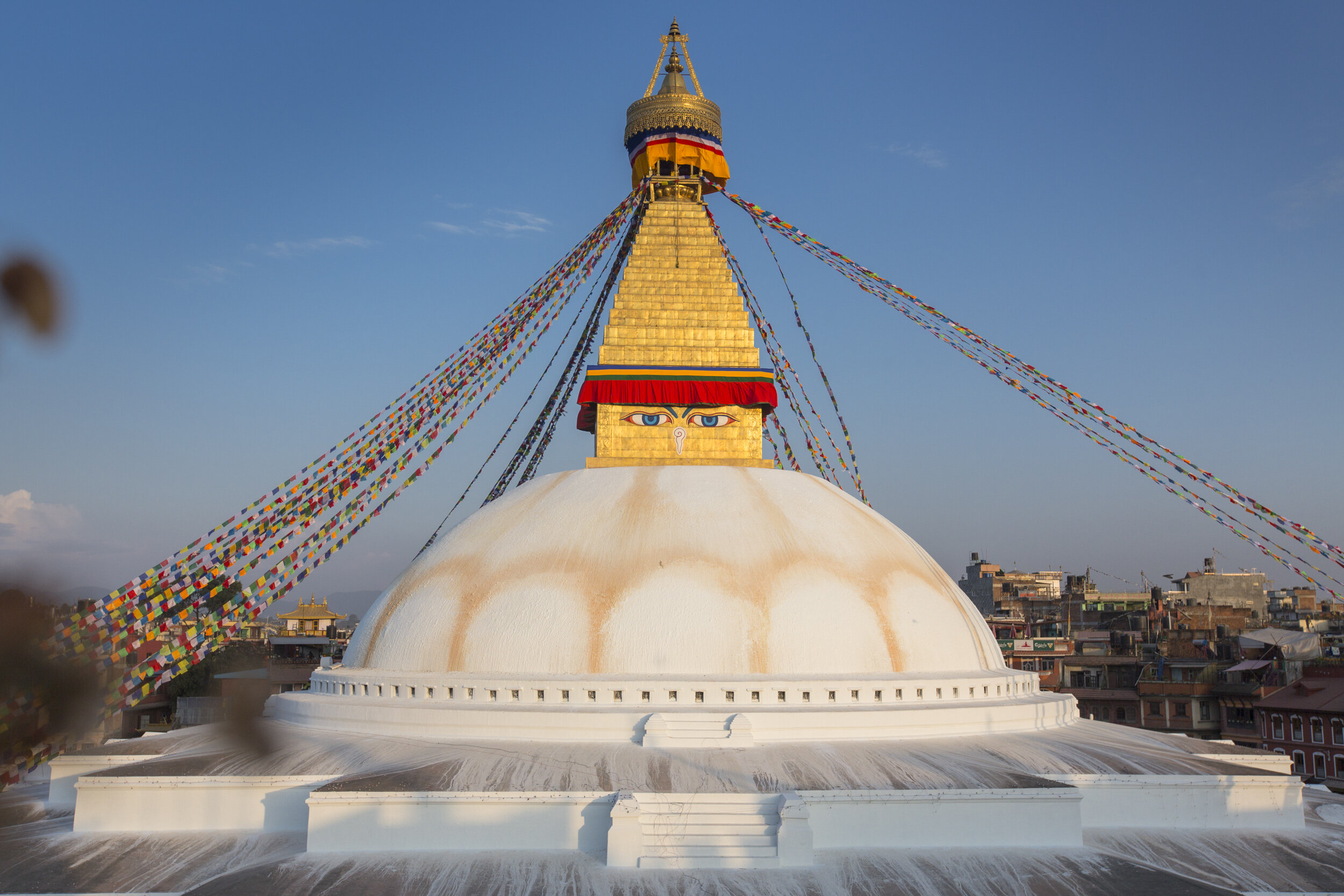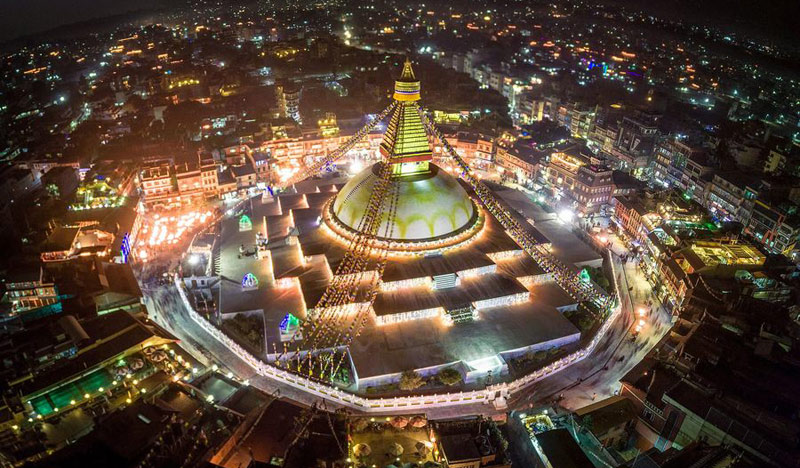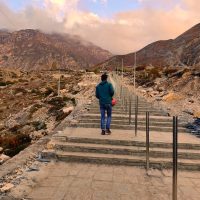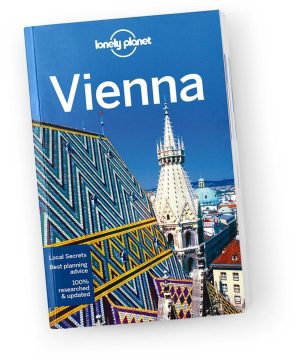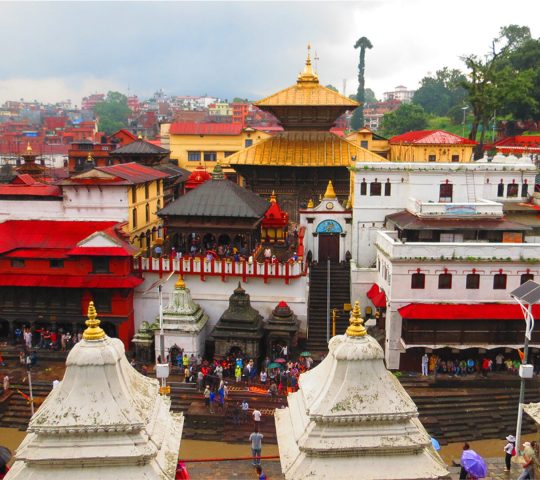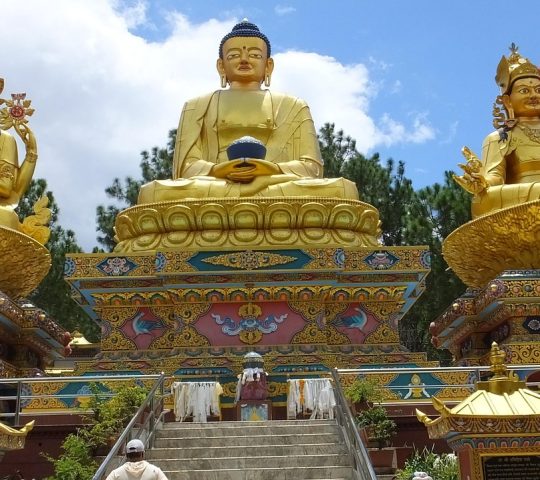Rising majestically against the Kathmandu skyline, Boudhanath Stupa is more than just an architectural wonder—it’s the beating heart of Tibetan Buddhism in Nepal. With its all-seeing Buddha eyes, fluttering prayer flags, and the rhythmic chants of pilgrims, this UNESCO World Heritage Site offers travelers a profound spiritual experience. Whether you’re a seeker of serenity, a culture enthusiast, or a photographer chasing golden-hour magic, Boudhanath promises an unforgettable encounter with Nepal’s soul.
Why Boudhanath Stupa is a Must-Visit
1. A Living Monument of Faith
Built in the 5th century, Boudhanath is one of the largest spherical stupas in the world (36 meters tall). Legend says it was constructed by a humble poultry woman who sought enlightenment. Today, it remains a vital pilgrimage site for Tibetan Buddhists and a sanctuary for travelers.
2. The Eyes of Wisdom
The stupa’s iconic Buddha eyes gaze in four directions, symbolizing omniscience and compassion. The nose-like “१” (Nepali numeral for “one”) represents unity—a reminder that enlightenment is for all.
3. A Sensory Experience
- Sound: Monks chanting Om Mani Padme Hum
- Sight: Thousands of prayer flags carrying mantras on the wind
- Smell: Butter lamps flickering in devotion
What to Do at Boudhanath
1. Join the Kora (Pilgrim’s Walk)
- Circle the stupa clockwise (3+ rounds is traditional)
- Spin the 108 prayer wheels—each turn sends blessings into the world
- Pro Tip: Dawn and dusk are the most magical times
2. Visit the Monasteries
- Shechen Monastery: Admire intricate murals and join meditation sessions
- Ka-Nying Shedrub Ling: Witness monks in debate
3. Light a Butter Lamp
- Offer a lamp (NPR 50–100) for loved ones or personal peace
4. Savor the Views from a Rooftop Café
- Stupa View Restaurant (try the ginger honey lemon tea)
- Café du Temple (perfect for sunset photography)
5. Shop for Tibetan Treasures
- Thangka paintings (handmade Buddhist artworks)
- Singing bowls (for meditation)
- Woolen chubas (traditional Tibetan dresses)
Best Time to Visit
- Sunrise (5:30–7 AM): Quiet and mystical
- Sunset (4–6 PM): Golden light bathes the stupa
- Avoid Midday (10 AM–3 PM): Crowded with tour groups
Festival Alert: Visit during Losar (Tibetan New Year, Feb/Mar) for masked dances and vibrant celebrations!
How to Get There
- From Thamel: 30-min taxi (NPR 500) or local bus (NPR 25, Bagmati route)
- Entry Fee: NPR 400 (~$3) for foreigners; free for pilgrims
Photography Tips
✔ Golden Hour: Sunrise/sunset for warm, soft light
✔ Low Angles: Shoot upward to include prayer flags
✔ Candid Moments: Capture monks in prayer or locals spinning wheels
❌ Respect Privacy: Ask before photographing faces
Nearby Attractions
- Pashupatinath Temple (15-min drive)
- Kopan Monastery (20-min walk)
Final Thoughts
Boudhanath isn’t just a stop on your itinerary—it’s a portal to peace. Whether you come for the history, the spirituality, or the sheer beauty, you’ll leave with a lighter heart and a deeper connection to Nepal’s soul.

